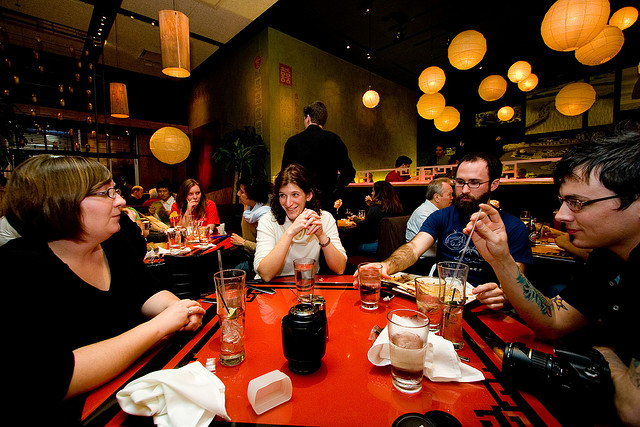Barter has been around for centuries. It all began when the patient

traded the doctor a chicken for medical services rendered. Today, barter has evolved to include anything from hair cuts to oil changes to enjoying a nice night out in a restaurant.
As independent restaurateurs look to keep the tables filled, they are turning to the old-fashioned barter system. The recent downturn in the economy has restaurant owners struggling to keep the tables filled with customers and pay the bills so some have returned to the “old ways” – barter as a viable option.
Swapping items like pest control, to advertising, to dry good and table and linen wear purchases, independent restaurant owners are able to free up cash to spend on necessities in order to keep the doors open and the lights on. Additionally with barter, restaurant owners are able to fill seats and lure more customers in the door. Individuals who are involved in bartering – be they businesses or individuals – are also benefiting, and helping fellow business owners by spending their “barter dollars” at local eateries.
Consumers with trade dollars to spend may be more open to trying out a new restaurant, and may bring in business colleagues or out of town visitors. Bartering also helps the wait staff – it’s hard to keep employees if there is no money or tips coming in to pay their wages.
While barter is not answer to all of the financial woes a restaurant may be facing, it can be a useful tool as barter can help free up credit lines or cash needed to purchase other items that are not covered under barter. Business owners can’t pay the taxes, or utilities with barter, but some may be fortunate enough to be in a barter-type situation for rent expenses.
Restaurant – and other business owners – who belong to barter exchanges such as Tradesource help participants monitor, track and manage their barter transactions. It also manages the transactions, which are considered taxable income by the IRS. With barter exchange programs, such as Tradesource, services are not swapped directly between vendors (no chickens are changing hands for medical services rendered!). In a barter exchange system, the restaurant owner can accumulate trade credits which can be used to make purchases, just as an individual who has his or her own trade credits can “spend” them at the restaurant. Customers who frequent the restaurants are typically responsible for paying the tax and tip.
Business owners looking for creative ways to keep the doors open and the customers coming in, are turning to barter as a viable option, are you?